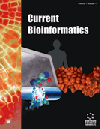
Full text loading...
We use cookies to track usage and preferences.I Understand
Recent evidence demonstrated the fundamental role of miRNAs as disease biomarkers and their role in disease progression and pathology. Identifying disease related miRNAs using computational approaches has become one of the trending topics in health informatics. Many biological databases and online tools were developed for uncovering novel disease-related miRNAs. Hence, a brief overview regarding the disease biomarkers, miRNAs as disease biomarkers and their role in complex disorders is given here. Various methods for calculating miRNA and disease similarities are included and the existing machine learning and network based computational approaches for detecting disease associated miRNAs are reviewed along with the benchmark dataset used. Finally, the performance matrices, validation measures and online tools used for miRNA Disease Association (MDA) predictions are also outlined.

Article metrics loading...

Full text loading...
References


Data & Media loading...

